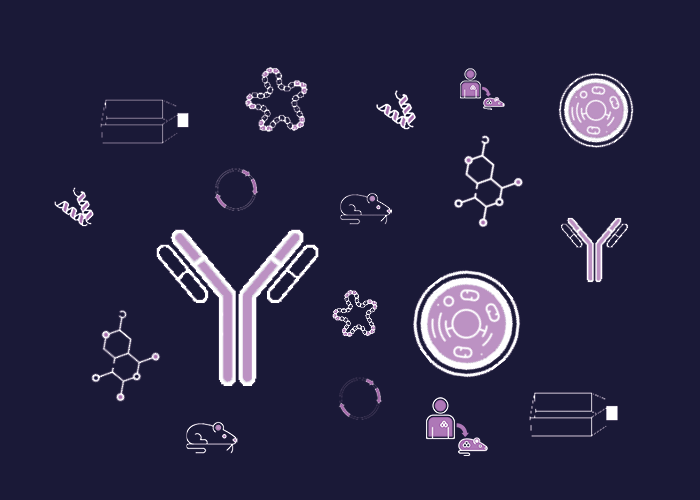
Cat. #157774
ABCB11 KO mouse
Cat. #: 157774
Sub-type: Mouse
Availability: 8-10 weeks
Disease: Progressive Familial Intrahepatic Cholestasis 2 (PFIC2)
Model: Knock-Out
This fee is applicable only for non-profit organisations. If you are a for-profit organisation or a researcher working on commercially-sponsored academic research, you will need to contact our licensing team for a commercial use license.
Contributor
Inventor: Victor Ling
Institute: BC Cancer
Tool Details
*FOR RESEARCH USE ONLY (for other uses, please contact the licensing team)
- Tool name: ABCB11 KO mouse
- Alternate name: spgp/bsep
- Research fields: Cancer;Cell biology;Drug development
- Tool sub type: Mouse
- Disease: Progressive Familial Intrahepatic Cholestasis 2 (PFIC2)
- Model: Knock-Out
- Conditional: No
- Description: Can be used as a genetic model for human Progressive Familial Intrahepatic Cholestasis 2 (a rare and fatal deficiency in the human bile salt transporter). These mice can also be used to study bile formation due to their high sensitivity to bile salt challenge.They can also be used in preclinical screening of choleretic agents.
- Genetic background: The knockout mice were created using gene targeting. Two different ES cell lines were used. TL-1 embryonic stem cells and E14K embryonic stem cells from 129SvyEv mice were generous gifts from Dr. Patricia Labosky (University of Pennsylvania, Philadelphia) and Dr. Tak Mak (Amgen Institute, Toronto), respectively. Genomic DNA of murine spgp gene was isolated from a l phage library of 129/J genomic DNA by using rat spgp cDNA as probe. One of the obtained genomic clones, 129J-9, and an additional fragment of 1.6 kb on the 59 end of 129J-9, which was cloned by PCR amplification, were used to generate the targeting vector (Ref 1, Fig. 1A). Positive selection cassette was pgk-NEO, but no negative cassette was used. The targeting vector was linearized with SstI and electroporated into TL-1 and E14k embryonic stem cells at 340 V and 250 mF of capacitance. ES cell clones surviving G418 selection were screened by Southern blot analysis. Four of the 11 targeted ES cell lines were subsequently used to produce chimeric mice and chimeric mice from three lines with germline transmission were used in this study. The heterozygous mutant mice from each generation were crossed into C57BL/6J. Homozygous mutant mice were produced by intercross of the heterozygous mice. Genotypes of the ES cells and mice were determined by Southern blot analysis using a 1-kb probe upstream of the 59 end.
- Phenotype: Severe jaundice, blocked bile ducts, high serum bile salts
- Zygosity: Homozygous
- Strain: C57BL/6
- Production details: The knockout mice were created using gene targeting. Two different ES cell lines were used. TL-1 embryonic stem cells and E14K embryonic stem cells from 129SvyEv mice were generous gifts from Dr. Patricia Labosky (University of Pennsylvania, Philadelphia) and Dr. Tak Mak (Amgen Institute, Toronto), respectively. Genomic DNA of murine spgp gene was isolated from a l phage library of 129/J genomic DNA by using rat spgp cDNA as probe. One of the obtained genomic clones, 129J-9, and an additional fragment of 1.6 kb on the 59 end of 129J-9, which was cloned by PCR amplification, were used to generate the targeting vector (Ref 1, Fig. 1A). Positive selection cassette was pgk-NEO, but no negative cassette was used. The targeting vector was linearized with SstI and electroporated into TL-1 and E14k embryonic stem cells at 340 V and 250 mF of capacitance. ES cell clones surviving G418 selection were screened by Southern blot analysis. Four of the 11 targeted ES cell lines were subsequently used to produce chimeric mice and chimeric mice from three lines with germline transmission were used in this study. The heterozygous mutant mice from each generation were crossed into C57BL/6J. Homozygous mutant mice were produced by intercross of the heterozygous mice. Genotypes of the ES cells and mice were determined by Southern blot analysis using a 1-kb probe upstream of the 59 end.
- Breeding information: High mortality in pups and poor breeding performance in triple homozygotes, use heterozygote breeding pairs
Handling
- Shipping conditions: Embryo/Spermatoza- Dry Ice
Target Details
- Target: Abcb11
References
- 14647060
- Lam et al. 2005. Biochemistry. 44(37):12598-605. PMID: 16156672.
- Wang et al. 2001. Proc Natl Acad Sci U S A. 98(4):2011-6. PMID: 11172067.


